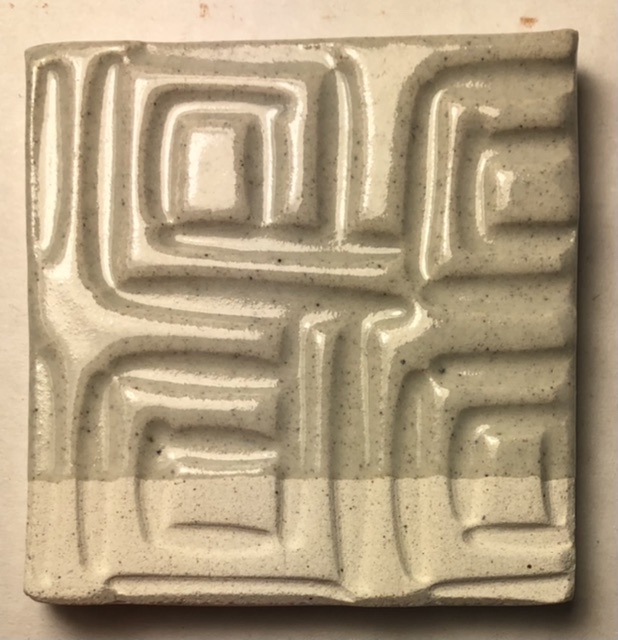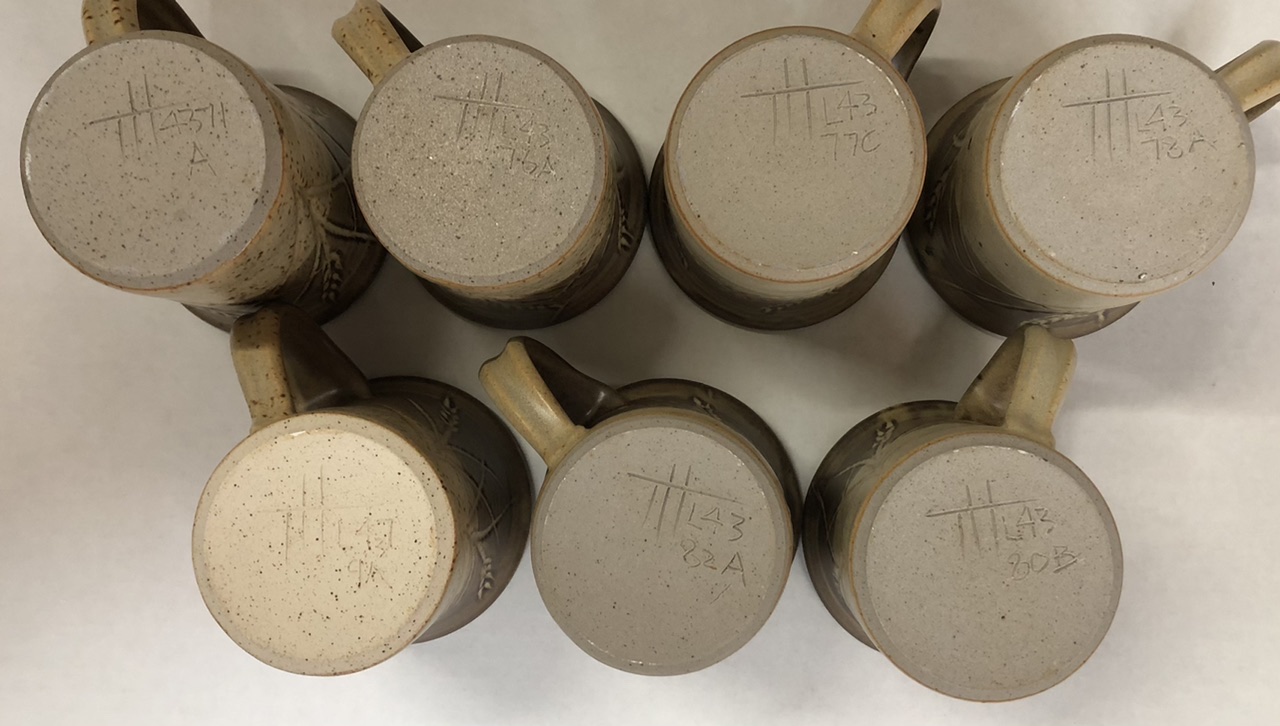Project Name
Blue Hills Clay Testimg 2021
Project Codenumber
UnAssigned
Notes
These clays are being tested to see if we can use them in our production at Plainsman Clays in Medicine Hat and to see if they are similar to industry materials that we currently import from the US and other countries.
They are similar to the materials we already have, but as generally cleaner (less fired speckle), more plastic and have a high drying shrinkage.
Ball clays and kaolins are used in dozens of industries and are imported into Canada in huge quantities. Only tiny percentage of clays manufactured are used in ceramics. Manufacturers in the southern US are global and selling billions of dollars worth of product. They have equipment that can process the clays in we form, as a slurry, to remove impurities and chemically treat them. They also have grinding equipment that can reduce particle sizes down to 325 mesh. And they have shipping infrastructures to handle powders and slurries and large volume.
Plainsman Clays has small scale equipment to process clay into 40-100 mesh particle sizes and our customers are schools, potters, small scale manufacturers. Our volumes are thus small. At our Ravenscrag quarry we mine 5 to 10 thousands tons at a time (about once every 5 years).
This being said, we are interested in finding ways to increase our volumes and expand our markets. We do currently sell clays for us in foundries, for example. While I work at Plainsman I also have my own company, Digitalfire.com. I make software and reference materials for ceramic technicians around the world and I am working to document our clays here to lure manufacturers. Especially ceramic tile, those guys use huge amounts of clay and your clays certainly could have application there.
Clays in your area include mainly ball clays and fireclays. Fireclays are used to make refractories and these are important in so many industries. Your #2021 clay is much more refractory than anything we currently have, I am guessing that would interest us now (for making Tapper Clay). We could likely make a nice stoneware clay out of the #2001 and 2020. The #2020 material is a ball clay, if it is clean enough and we can grind it well we could add that to a dozen of our products right now. And if that could be processed to 200 mesh it could be sold in large quantities to other industries. It is cleaner, stickier and more plastic than the materials we currently buy from Kentucky. The 2018 is a descent fireclay, although not as refractory as 2021, but it is very clean burning. I will try to make a stoneware and porcelain out of it.
When I get some pieces made I will bring them to you in the spring. I am planning on coming, I have a place to stay in Carlisle. You can see the kind of things I make at https://tonyhansen.com/pottery.
Blue Hills Quarry #2018
4’ layer
|
Code # L4380 |
Notes
Screened to 35#
I was told this is the same as #2001 L4378, but not according to these tests.
A fireclay. High porosity through the firing range. Good plasticity. Low fired shrinkage. This would be usable in ceramics, in amounts as high as 50% in recipes.
Dave dug #2018 and #2001 3 years apart, possibly not quite in the same location. He remembers 2001 was hard and blocky when dug and 2018 was a bit more crumbly. The two locations are within 100 feet of each other.
Pictures
L4380 closeup of plastic material surface

L4380 +50mesh material

L4380 DFAC disk dried

L4380 Fired tile, DFAC disk Cone 10R

G1947U Working normally at cone 10R

This is a standard glaze, it has not crazed on this clay so we know it does not have a higher-than typical pottery stoneware thermal expansion. It has not shivered either, so it does not have a significantly lower-than-typical expansion either.
L4380 Fired bars (cone 10R downward)

2021 Eastern Sask clay H550 test mugs

Testdata
SHAB - Shrinkage/Absorption
| DLEN | FLEN | FWT | BWT | CONE | DSHR | FSHR | ABS | |
| 12 | 92.7 | 89.07 | 34.92 | 38.85 | 10.5R | 7.3% | 3.9% | 11.3% |
| 10 | 92.85 | 88.67 | 35.06 | 38.64 | 10 | 7.2% | 4.5% | 10.2% |
| 9 | 92.66 | 88.7 | 35.27 | 39.05 | 8.8 | 7.3% | 4.3% | 10.7% |
| 8 | 92.61 | 88.84 | 35.6 | 39.83 | 7.8 | 7.4% | 4.1% | 11.9% |
| 7 | 92.78 | 88.97 | 34.82 | 39.16 | 6.8 | 7.2% | 4.1% | 12.5% |
| 6 | 92.66 | 89.21 | 33.94 | 38.40 | 5.7 | 7.3% | 3.7% | 13.1% |
SIEV - Sieve Analysis 35-325 Wet
| TOT | 48M | 65M | 100M | 150M | |
| 1 | 79.0 | 0.08 | 0.29 | 0.63 | 2.34 |
LDW - LOI/Density/Water Content
| WWGT | DWGT | FWGT | H2O | LOI | DENS | |
| 1 | 37.95 | 28.73 | 26.36 | 24.3% | 8.2% |
XML (to paste into Insight)
Born: 2020-11-22, Modified: 2021-04-11 08:16:46
Blue Hills Quarry #2001
|
Code # L4378 |
Notes
3 ft thick
A refractory stoneware. Light burning with some iron specks.
Plasticity typical of a pottery clay for throwing. Fairly clean. With 5-10% feldspar this could be a good stoneware for cone 10.
Pictures
L4378 Blue Hills Quarry #2001 raw clay

+70 mesh material

L4371 DFAC disk dried

L4378 Fired DFAC disk Cone 10R

G1947U Working normally at cone 10R

This is a standard glaze, it has not crazed on this clay so we know it does not have a higher-than typical pottery stoneware thermal expansion. It has not shivered either, so it does not have a significantly lower-than-typical expansion either.
L4378 Fired bars (cone 10R downward)

With RavenTalc at 10R

Testdata
SHAB - Shrinkage/Absorption
| DLEN | FLEN | FWT | BWT | CONE | DSHR | FSHR | ABS | |
| 12 | 92.8 | 87.38 | 34.95 | 37.20 | 10.5R | 7.2% | 5.8% | 6.4% |
| 10 | 92.79 | 86.94 | 36.12 | 37.83 | 10 | 7.2% | 6.3% | 4.7% |
| 9 | 92.85 | 87.25 | 36.63 | 38.83 | 8.8 | 7.2% | 6.0% | 6.0% |
| 8 | 92.81 | 87.63 | 37.37 | 39.93 | 7.8 | 7.2% | 5.6% | 6.9% |
| 7 | 92.74 | 87.9 | 36.92 | 40.03 | 6.8 | 7.3% | 5.2% | 8.4% |
| 6 | 92.42 | 87.82 | 36.11 | 38.48 | 5.7 | 7.6% | 5.0% | 6.6% |
DFAC - Drying Factor
| DFAC | SOLD | |
| 1 | C110 | Light |
SIEV - Sieve Analysis 35-325 Wet
| TOT | 48M | 65M | 100M | 150M | |
| 1 | 50.75 | 0.16 | .04 | 0.13 | 0.53 |
LDW - LOI/Density/Water Content
| WWGT | DWGT | FWGT | H2O | LOI | DENS | |
| 1 | 17.86 | 13.53 | 12.43 | 24.2% | 8.1% |
XML (to paste into Insight)
Born: 2020-11-19, Modified: 2021-10-27 20:29:41
Blue Hills Quarry #2020
|
Code # L4377 |
Notes
Outcrop. Thickness: 2 ft.
50.103267, -105.420278
A plastic, non-refractory ball clay. Very clean burning. Medium soluble salts. Drying shrinkage is high. This could make up 50% of a stoneware body recipe.
See notes in Plainsman people for Dave Edgerton
Pictures
L4377 lumps

+70 mesh material

L4377 DFAC disk dried

L4377 Fired tile, DFAC disk Cone 10R

L4377 Fired bars (cone 10R downward)

G1947U Working normally at cone 10R

This is a standard glaze, it has not crazed on this clay so we know it does not have a higher-than typical pottery stoneware thermal expansion. It has not shivered either, so it does not have a significantly lower-than-typical expansion either.
With RavenTalc at 10R

Untitled

Testdata
SHAB - Shrinkage/Absorption
| DLEN | FLEN | FWT | BWT | CONE | DSHR | FSHR | ABS | |
| 12 | 91.5 | 84.44 | 30.44 | 31.46 | 10.5R | 8.5% | 7.7% | 3.4% |
| 10 | 91.82 | 84.2 | 28.48 | 30.12 | 10 | 8.2% | 8.3% | 5.8% |
| 9 | 91.46 | 84.21 | 31.25 | 32.28 | 8.8 | 8.5% | 7.9% | 3.3% |
| 8 | 91.5 | 84.13 | 30.61 | 31.78 | 7.8 | 8.5% | 8.1% | 3.8% |
| 7 | 91.41 | 84.39 | 30.44 | 32.14 | 6.8 | 8.6% | 7.7% | 5.6% |
| 6 | 91.38 | 85.07 | 29.38 | 31.48 | 5.7 | 8.6% | 6.9% | 7.1% |
SIEV - Sieve Analysis 35-325 Wet
| TOT | 48M | 65M | 100M | 150M | |
| 1 | 74.5 | 0.14 | 0.06 | 0.2 | 0.21 |
LDW - LOI/Density/Water Content
| WWGT | DWGT | FWGT | H2O | LOI | DENS | |
| 1 | 34.15 | 24.88 | 22.27 | 27.1% | 10.5% |
XML (to paste into Insight)
Born: 2020-11-18, Modified: 2024-12-02 14:33:02
Blue Hills Quarry #2021
Fireclay
|
Code # L4375 |
Notes
Previously mined for Claybank brick plant.
An exceptionally refractory material. With lower drying shrinkage. This could likely be used pure to make firebricks. Good firebricks cost more than $5 each and if they are the insulating type, they are light and use very little clay.
Looks the Plainsman RE sand that we mine at Ravenscrag, but this much more plastic, no problem at all rolling and making test specimens. Very pleasant feel. That means this has more kaolin and less sand than our material.
Some iron particulates.
The landowner is curious to see if it has any commercial value. There appears to be no stockpile.
Pictures
Lump material L4374

Most of the material was quite fine, few lumps. It weathers down more than the other samples.
Closeup of plastic L4374 material

+50 mesh material

L4375 DFAC disk dried

L4375 Fired tile, DFAC disk Cone 10R

L4375 Fired bars (cone 10R downward)

G1947U Working normally at cone 10R

This is a standard glaze, it has not crazed on this clay so we know it does not have a higher-than typical pottery stoneware thermal expansion. It has not shivered either, so it does not have a significantly lower-than-typical expansion either.
With RavenTalc at 10R

Testdata
SHAB - Shrinkage/Absorption
| DLEN | FLEN | FWT | BWT | CONE | DSHR | FSHR | ABS | |
| 12 | 94.31 | 92.08 | 36.85 | 43.13 | 10.5R | 5.7% | 2.4% | 17.0% |
| 10 | 93.83 | 91.15 | 38.07 | 44.31 | 10 | 6.2% | 2.9% | 16.4% |
| 9 | 93.75 | 91.17 | 38.05 | 44.47 | 8.8 | 6.3% | 2.8% | 16.9% |
| 8 | 93.49 | 91.39 | 37.41 | 43.92 | 7.8 | 6.5% | 2.2% | 17.4% |
| 7 | 93.63 | 91.7 | 36.64 | 43.29 | 6.8 | 6.4% | 2.1% | 18.1% |
| 6 | 93.51 | 91.74 | 36.44 | 43.19 | 5.8 | 6.5% | 1.9% | 18.5% |
DFAC - Drying Factor
| DFAC | SOLD | |
| 1 | A000 | nil |
SIEV - Sieve Analysis 35-325 Wet
| TOT | 35M | 48M | 65M | 100M | |
| 1 | 55.74 | 0.63 | 0.24 | 1.72 | .06 |
LDW - LOI/Density/Water Content
| WWGT | DWGT | FWGT | H2O | LOI | DENS | |
| 1 | 33.95 | 26.44 | 24.52 | 22.1% | 7.3% |
XML (to paste into Insight)
Born: 2020-11-17, Modified: 2021-10-27 20:31:41
